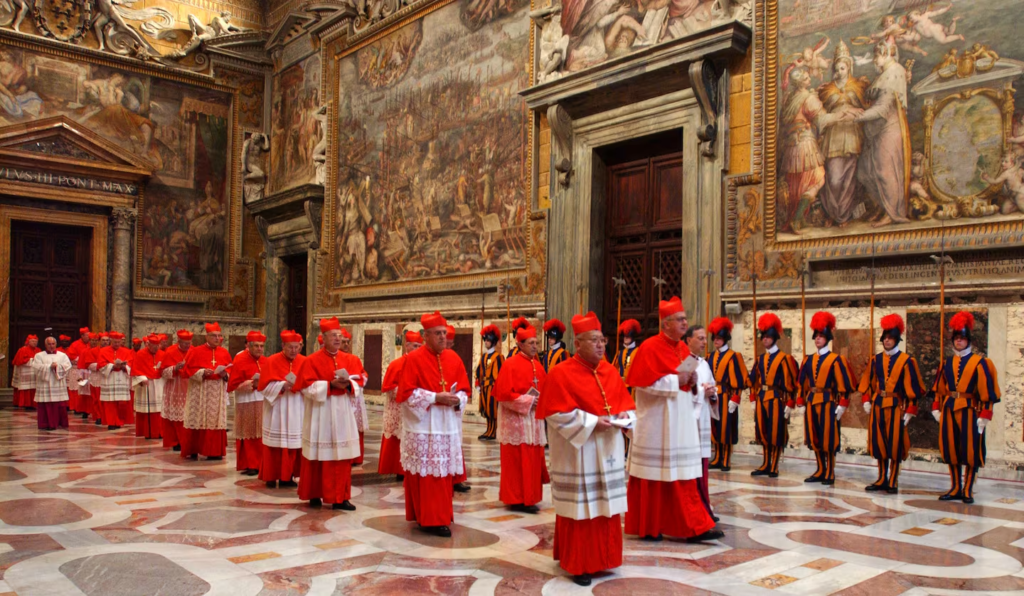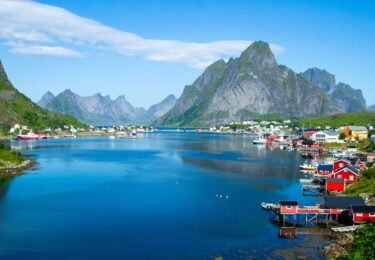Devotees will converge on Rome to commemorate the passing of Pope Francis, who departed this world on April 21. His funeral is set for Saturday, April 26, at 10 a.m.
Renowned for his progressive stances and his penchant for engaging in personal conversations with the public, Pope Francis may draw not only the world’s 1.4 billion Catholics but also many non-Catholics eager to honor his memory.
Italy is already experiencing record-breaking tourist numbers, with Rome particularly crowded this year due to the Vatican Jubilee. This event is expected to attract over 32 million pilgrims, alongside the 37.3 million visitors who flocked to the city last year.
Navigating Rome to pay your respects may prove challenging amidst these throngs.
Mountain Butorac, a guide for Vatican pilgrimages through The Catholic Traveler, shared with CNN before the pope’s passing that media coverage will likely surpass that of Pope Benedict’s funeral, given Francis’ active papacy. Yet, he anticipates crowd sizes akin to Benedict’s farewell, far below the four million who gathered for Pope John Paul II’s funeral in 2005.
The conclave, where cardinals convene to select the next pope, typically occurs two to three weeks after a pontiff’s death and will likely attract many to Rome, Butorac noted. Unlike Benedict’s case, time-constrained mourners may need to choose between attending the funeral or the conclave.

The Schedule
The funeral for Pope Francis is slated for Saturday, April 26, at 10 a.m.
Prior to the funeral, a lying-in-state period will occur. On Wednesday, April 23, Francis’ coffin was moved from his residence at Casa Santa Marta to St. Peter’s Basilica.
After a private ceremony in the basilica, the public may view the coffin, with the basilica open until midnight on Wednesday, from 7 a.m. to midnight on Thursday, and from 7 a.m. to 7 p.m. on Friday. A closing ceremony for the coffin is scheduled for 8 p.m. Friday.
The funeral will commence at 10 a.m. Saturday in St. Peter’s Square, accessible to all without tickets, though expect lengthy queues. A final Commendation and Valediction will precede the coffin’s transfer into St. Peter’s Basilica for the remainder of the rite.
Afterward, the body will be transported to the Basilica of Santa Maria Maggiore, approximately two miles east of St. Peter’s, for interment. The procession route remains undisclosed.
Pope Francis to Be the First Pontiff Buried Outside the Vatican in Over a Century
Most pontiffs are interred in Vatican City, but Pope Francis has opted for Rome’s Basilica of Santa Maria Maggiore, the resting place of seven previous popes.

The ceremonial aspects of a pope’s funeral are detailed in the “Ordo Exsequiarum Romani Pontificis” (Funeral Rites for the Roman Pontiff). Popes may influence these arrangements, as Francis did by endorsing a revised liturgical text in 2024. In his 2025 autobiography, “Hope,” he described the original funeral plans as “overwrought” and streamlined them. He also selected his burial site, becoming the first pope in over a century to rest outside the Vatican. A frequent worshiper at Santa Maria Maggiore, he last visited unannounced on April 12.
The Mourning Period
Vatican protocol mandates burial between the fourth and sixth day post-death. The funeral initiates the “Novendiales,” a nine-day mourning period with daily masses for Pope Francis until May 4.
During this time, cardinals worldwide will arrive in Rome for the conclave, the date of which is yet to be confirmed.
Butorac explained that each cardinal is linked to a titular church in Rome, where they typically hold a Mass two days before the conclave. The day prior, a public Mass in St. Peter’s Basilica includes all cardinals, after which they enter the Sistine Chapel, secluded until a new pope is elected.
The Conclave

The conclave to choose the next pope may begin no earlier than May 6, 15 days after Francis’ passing, with the precise date to be set by the cardinals.
While cardinals deliberate in the Sistine Chapel, crowds will gather in St. Peter’s Square, praying and awaiting white smoke from the chapel’s chimney, signaling a new pope’s election. Soon after, the new pontiff will address the crowd from his balcony.
No tickets are needed to enter the square, but security checks are mandatory, per Butorac.
On the conclave’s first day, a single evening vote occurs. Subsequent days feature four votes—two in the morning, two in the afternoon. Ballots are burned twice daily, with black smoke indicating no decision and white smoke announcing a new pope.
Voting persists, with a break every five days, until a new Bishop of Rome emerges. The public is typically informed of voting times, allowing them to gather in the square, though seating is unavailable, and waits can be long.
How to Get There
Rome boasts two international airports. Fiumicino, 17 miles southwest of the city center, is Italy’s busiest, serving non-European carriers. Ciampino, southeast and closer to central Rome, caters to budget airlines with European and select Moroccan routes.
From Fiumicino, the Leonardo Express train runs every 15 minutes to Termini station. Taxis offer a flat rate of 55 euros ($58) to city-center destinations, while buses to Termini take 50 minutes and cost 9.90 euros ($10.40) round-trip.
From Ciampino, taxis charge 40 euros ($42), and buses to Termini take 40 minutes for 9.90 euros.
While flying directly to Rome is convenient, consider other Italian airports. Termini station connects to Italy’s high-speed rail, placing Milan just over three hours away and Naples about an hour.
Where to Stay

Rome will be exceptionally busy, so accommodations near St. Peter’s are ideal, though the Jubilee has already strained 2025 hotel availability. Vatican City lies west of the Tiber, opposite Rome’s historic core. The Prati district, just north, is optimal for lodging. Campo Marzio, near Campo de’ Fiori or Piazza Navona, offers easy access across the river.
If options are scarce, the Ottaviano metro stop serves the Vatican. Areas like Piazza di Spagna, or the more budget-friendly Piazza della Repubblica and Termini station, are a short metro ride away.
Despite price surges, some hotels remain affordable. On Tuesday, post-announcement, Booking.com listed two- and three-star hotels near Termini for roughly 500 euros ($574) for three nights (Wednesday to Saturday). Luxury options, like the Bvlgari hotel near the Vatican, quoted 8,310 euros ($9,539) for the same period.
For limited availability, longer stays may be more cost-effective. Hotel Lancelot, a family-run three-star near the Colosseum, requires a three-night minimum during the lying-in-state and funeral but maintains reasonable rates, with a single room for three nights at 420 euros ($482) as of Tuesday.
What to Do
Vatican City, a top Rome attraction, will prioritize its sacred functions during this period, halting tourism. The Sistine Chapel will host the conclave, St. Peter’s will facilitate the lying-in-state, and the Vatican Museums will close on April 26. Tours of the Vatican Gardens and the Necropolis of the Via Triumphalis are also suspended, per the Musei Vaticani website.
For sightseeing, explore Rome’s papal-linked sites. A 10-minute walk from St. Peter’s Square, Castel Sant’Angelo, originally Emperor Hadrian’s mausoleum, later served as a papal stronghold. Pope Clement VII sheltered there during the 1527 Sack of Rome.
To honor Francis, visit Rome’s basilicas, which double as cultural treasures. The three other “papal basilicas”—San Giovanni in Laterano, Santa Maria Maggiore, and San Paolo Fuori le Mura—rival St. Peter’s in significance, each featuring a holy door and papal altar. San Paolo, near Via Ostiense, is believed to house St. Paul’s remains.
Note that Santa Maria Maggiore, Francis’ burial site, may face visitor restrictions around the funeral, though details are pending.
For Michelangelo enthusiasts, alternatives to St. Peter’s abound. His striking Moses statue in San Pietro in Vincoli, in Monti, rivals the Pietà and was crafted for Pope Julius II’s unrealized tomb. The grand Santa Maria degli Angeli, a repurposed Roman bath redesigned by Michelangelo, and his Risen Christ in Santa Maria Sopra Minerva, near the Pantheon, are also must-sees.
Out of Town
Two remarkable papal sites lie beyond Rome. Castel Gandolfo, the pope’s summer retreat until Francis simplified his lifestyle, is now accessible. Since 2016, the Palazzo Apostolico and its scenic gardens overlooking Lake Albano are open daily (check times), though closed on April 26 in mourning.
In Viterbo, 100 minutes by train north of Rome, the Palazzo dei Papi hosted the papal Curia from 1257 to 1281. This grand palace, now a visitor attraction, reflects its historical prominence, with Viterbo remaining a papal favorite due to its thermal springs.






0 Comments